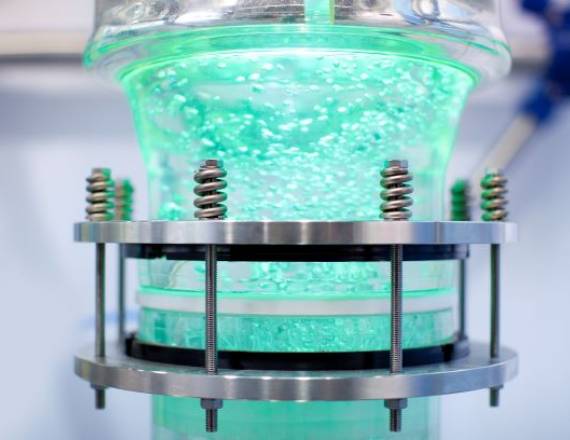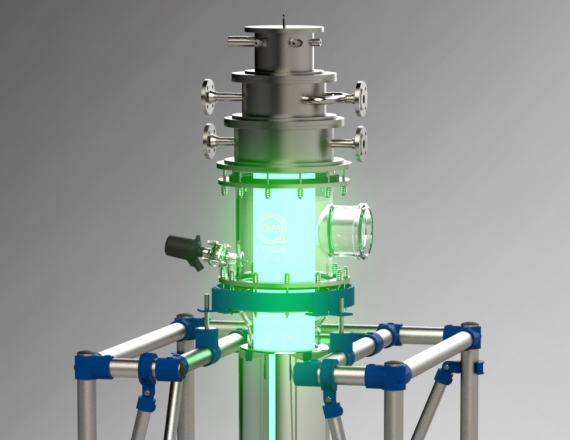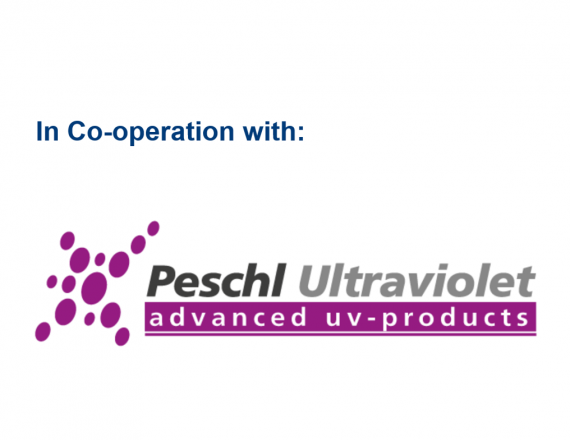PhotoFlowReactor
- Maximum selectivity -
- Production scale –
- VIS – UV – VUV Radiation sources-
- Capacity up to 60 kW –
- Highly efficient standardized design -
- Option for gas/liquid reactions -
- ATEX certified –



Concept
The amount of photons required for a photochemical reaction is stochiometric means proportional to the quantity of starting material reached by the radiation. Additional photons are required to compensate the loss due to the absorption while passing through the material of the lamp, the of reactor and fluids as e.g. the solvent. With flow reactors the pathway of the radiation through the fluid can be kept short and hence the absorption low so that they are more efficient than stirred reactors. The PhotoFlowReactor consists of a cylindrical immersion lamp installed in a cylindrical pipe generating an annular gap. The reaction fluid flows through this annular gap, a short pathway for the radiation. This basic design is common in lab scale. De Dietrich Process System has transferred this concept together with PESCHL Ultraviolet GmbH into this production scale PhotoFlowReactor.
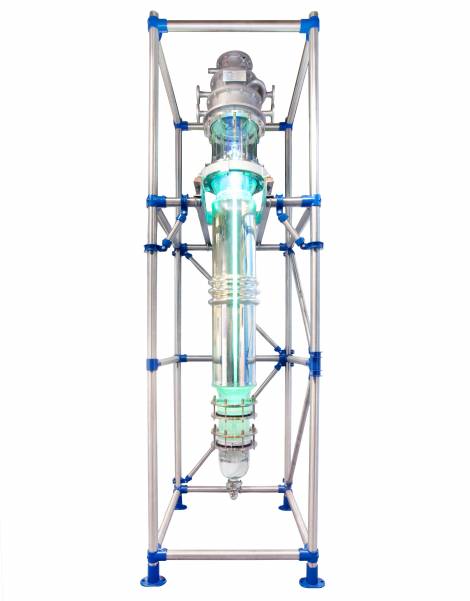
Function
The PhotoFlowReactor is a flow reactor for photochemical reactions in a liquid phase with the option to disperse a reaction gas at the inlet. The photoreactions can be carried out between -30 to +100°C at up to + 1 barg. The max. hydraulic flow rate is far above 20m³/h so that the maximum operational flow rate is determined by the min. residence time necessary for the reaction. The PhotoFlowReactor has been standardized for different directly illuminated reactor volumes up to 150l.
A continuous PhotoFlowReactor permits a much narrower residence time distribution than a continuous stirred reactor so that a higher selectivity can be realized.
PhotoFlowReactors can be connected in series to increase the residence time or in parallel to increase the throughput. As such they can be operated in full continuous mode or in batch mode as side loop reactors.
.
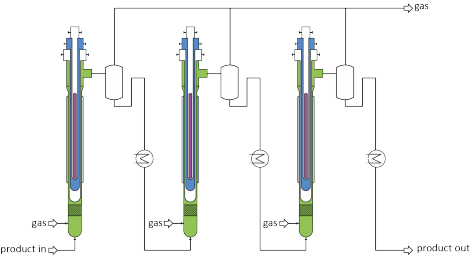
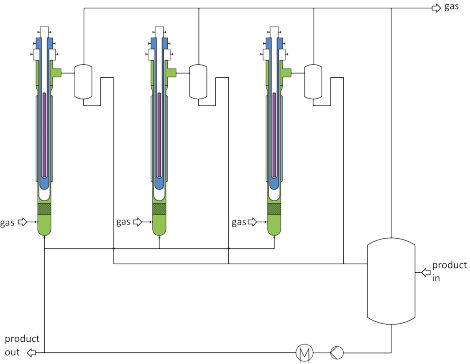
.
Technical Description
PESCHL Ultraviolett GmbH provides licht sources with a capacity of up to 60kW. They have an internal nitrogen purge to avoid any hazardous atmospheres inside the lamp (1). Although the lamps are highly efficient they generate quite some heat. Hot surfaces in the reaction fluid may lead to chemical decomposition and increase the temperature of the reaction mixture to an unwanted level. To avoid such hot surfaces the immersion lamp has a cooling jacket (2) connected to an external cooling circuit with a maximum pressure of +1,5 barg. In order to insulate the cooling jacket from the reaction fluid an additional jacket (3) can be added either evacuated or filled up to +2 barg with a gas like nitrogen. Using different gases permits to absorb radiation with undesired wavelengths. With the above said, the radiation may have to pass up to 3 glass walls so that their absorption has to be considered. As per below graphic borosilicate glass 3.3 is transparent with respect to VIS and UV (A and B). Quartz glass has an increased transparency range down to UV (C) 0,2µm. Hence in case VUV radiation - UV (B and C) - is applied quartz glass is used.
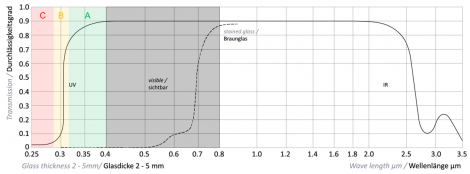

The QVF® SUPRA-Line glass reactor is a basically a tube(4) with an outer evacuated and silver coated insulation jacket(5) reflecting the radiation back to the inside. The directly illuminated reaction volume is a function of the annular gap between inner wall of the reactor tube (4) and the outer wall of the jacket (2) or (3). The higher the absorption rate of the liquid the smaller the annular gap should be. A smaller annular gap means also a smaller reaction volume.
An optional gas dispersion section at the inlet of the UV-FlowReactor permits excellent mass transfer for gas/liquid reactions by means of the DURAPACK® packing.
Connections for process media and instrumentation are QVF® SUPRA-Line. The connections for the utilities are DIN or ANSI type.
The PhotoFlowReactor with the maximum capacity has a height of about 3m and requires an additional height for servicing of another 4m.
Highlights
- Continuous UV reactor –
- Maximum selectivity -
- Production scale –
- VIS – UV – VUV Radiation Sources-
- Capacity up to 60 kW –
- Highly efficient standardized design -
- Option for gas/liquid reactions -
- ATEX certified –
